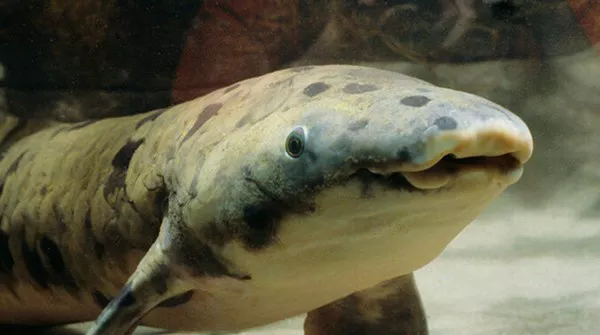Lungfish are a fascinating group of fish that have been around for hundreds of millions of years. These unique creatures are known for their ability to breathe air and survive in harsh environments with low oxygen levels. While there are several species of lungfish found around the world, one question that often comes up is: what is the largest lungfish? In this article, we will explore the different species of lungfish and discover which one holds the title for the largest.
What are Lungfish?
Lungfish are a type of fish that belong to the class Sarcopterygii, which includes the coelacanth and tetrapods (four-limbed animals). There are six different species of lungfish found in Africa, South America, and Australia. These fish are often referred to as “living fossils” because they have remained relatively unchanged for over 380 million years.
Lungfish have a unique respiratory system that allows them to breathe air. They have a single lung that is connected to their pharynx, as well as gills that they use to breathe underwater. This dual respiratory system allows lungfish to survive in environments with low oxygen levels, such as stagnant ponds and rivers.
The Different Species of Lungfish
There are six species of lungfish, each with its own unique characteristics and range. Here is a brief overview of each species:
- African Lungfish (Protopterus spp.): Found in parts of Africa, the African lungfish is the most widely distributed species of lungfish. It can grow up to 1.5 meters in length and has a lifespan of up to 25 years.
- Australian Lungfish (Neoceratodus forsteri): The Australian lungfish is found in the rivers and streams of eastern Australia. It is the largest of all the lungfish species, growing up to 1.8 meters in length and weighing up to 40 kg. It is also one of the oldest living species of freshwater fish, with a lifespan of up to 100 years.
- South American Lungfish (Lepidosiren spp.): Found in the Amazon River Basin, the South American lungfish can grow up to 1 meter in length and has a lifespan of up to 20 years.
- Marbled Lungfish (Protopterus aethiopicus): Found in parts of Africa, the marbled lungfish can grow up to 1.2 meters in length and has a lifespan of up to 20 years.
- Spotted Lungfish (Protopterus dolloi): Also found in parts of Africa, the spotted lungfish can grow up to 1 meter in length and has a lifespan of up to 15 years.
- West African Lungfish (Protopterus annectens): Found in West Africa, the West African lungfish can grow up to 1.5 meters in length and has a lifespan of up to 20 years.
The Largest Lungfish Species
As mentioned earlier, the Australian lungfish (Neoceratodus forsteri) is the largest of all the lungfish species. This species can grow up to 1.8 meters in length and weigh up to 40 kg. The Australian lungfish is also one of the oldest living species of freshwater fish, with a lifespan of up to 100 years.
The Australian lungfish is found in the rivers and streams of eastern Australia, where it feeds on a variety of prey, including crustaceans, mollusks, and small fish. It is also known for its ability to survive in harsh environments with low oxygen levels, such as stagnant pools and drought-stricken rivers.
Conservation Status
While lungfish have survived for hundreds of millions of years, they are now facing threats from habitat destruction and overfishing. In some areas, lungfish populations have declined due to pollution, damming of rivers, and destruction of wetland habitats. The African lungfish, for example, is listed as a species of “Least Concern” by the International Union for Conservation of Nature (IUCN), but some populations are facing declines due to habitat destruction and overfishing.
The Australian lungfish is also considered a species of “Least Concern” by the IUCN, but it is protected in some areas of Australia where it is considered a cultural and ecological icon. In Queensland, for example, it is illegal to catch, kill, or harm an Australian lungfish, and fines of up to $110,000 can be imposed for violations.
Despite their protected status, lungfish still face threats from human activities and environmental changes. It is important to continue monitoring lungfish populations and protecting their habitats to ensure their survival for future generations.
Lungfish are a unique group of fish that have adapted to survive in harsh environments with low oxygen levels. While there are six different species of lungfish found around the world, the Australian lungfish is the largest of them all, growing up to 1.8 meters in length and weighing up to 40 kg.


























